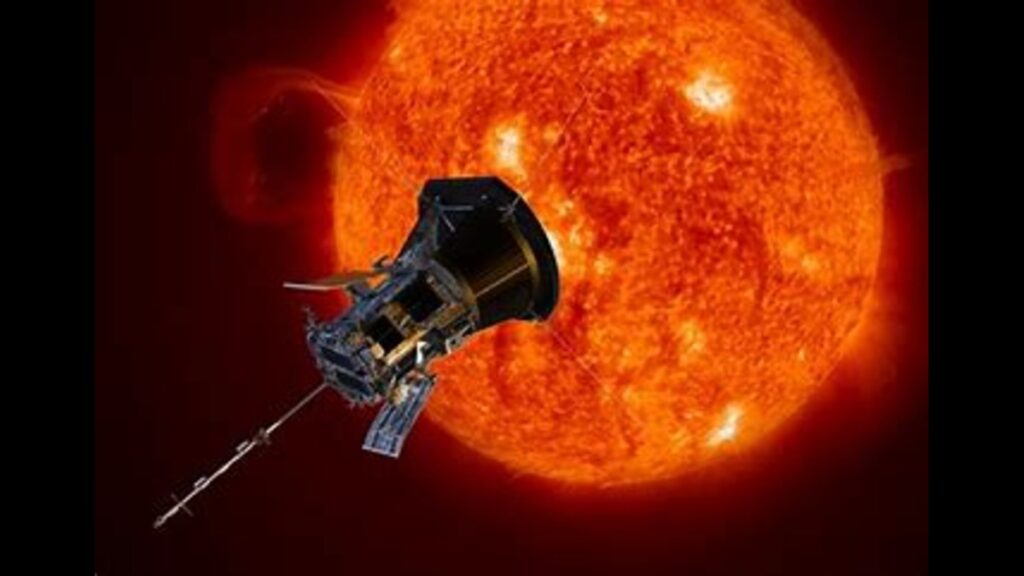Sundry outbursts from the sun might trigger fantastic auroras in plentiful sections of United States at the weekend. Current forecasts indicate auroras may be visible from Alabama to northern California
An severe geomagnetic stormed is anticipate to hit Earth on lately Friday, setting in motion colorful night-time auroras, or the northern lights. Folks in the United States could glimpse moderate to strong geomagnetic activity(auroras) embark around 11 p.m. and lasting through Saturday. Current forecasts predict the lights could be seen as farther south as Alabama to northern California, in accordance with the Nationally Oceanic and Atoms Fair Administration’s Space Weather Prediction Center. Prospect of seeing the lights will be highest in the northern United States, Canada, and northern Europol.
To maximize your possibility of spotting auroras Friday night, spot a dark sky location away from city illuminate. You’ll also wish cloud-free skies. Regrettably, considerable cloud cover shall be spread over the Great Lakes, Mid-Atlantic and Northeast, albeit some gaps in the cloud canopy are possibilities.
Clear skies are more likely over the central slates and West Coast. Geomagnetic storms are hard to forecast, and periodically predicted northern lights displays disappoint if a storm’s timing changes or its magnetic field is out of cooperation with the Earth’s. “It is a fairly volatile situation on the sun right now that we’re monitoring very closely,” articulated Bill Murtagh, program coordinator at NOAA’s Space Weather Prediction Center. “We’re going to get somewhat of an extended duration of geomagnetic storming.”
The geomagnetic storm comes whilst the sun is at its most activeness in about two decades, and it is anticipate to remain thusly for at least the rest of this twelvemonth. auroras are created when energy and particles from the sun temporarily disturb Earth’s magnetosphere, creating a geomagnetic storm. Some solar particles roam along our planet’s magnetic field lines into the upper atmosphere, exciting nitrogen and oxygen molecules and releasing photons of light in diverse hues.
Friday’s foreseen geomagnetic storm is the effect of multiple explosions on the sun, called coronal mass ejections. Coronal mass ejections are large clouds of solar plasma and magnetic field. Starting earlier this week, the sun has dispatched at least five of these eruptions towards Earth that are anticipate to first arrive Friday. It’s possibly that some of these ejections will combine — increasing the force of the storm.“Depending on how these [coronal mass ejections] are staggered, you can expect the activity to last longer,” articulated Rob Steenburgh, a space scientist at NOAA’s Space Weather Prediction Center. “Our expectation and the modeling do suggest that they kind of catch up with each other.”
You can see Auroras old Prediction in image. Reddish area can have strong probability of auroras.
As of Thursday afternoon, NOAA forecasts predicted a severe geomagnetic storm, rated 4 out of 5. NOAA wrote on X that it was its first predicted rating of 4 since 2005.
If the geomagnetic storm is that strong, people in southern states might is able to view a red glow, as has happened in recent storms of similar intensity. Intense geomagnetic storms can also sometimes disrupt power systems, GPS communications, or satellite operations. Steenburgh, though, doesn’t anticipate issues with power systems and is working closely with grid operators across North America ahead of the storm. The coronal mass ejections came from a particularly bustling area in the southwestern hemisphere of the sun, labeled active region 3664, Steenburgh said. Active regions are easy to see because they contain dark areas called sunspots. Sunspots are temporary dark blotches whereas the sun’s magnetic field is extremely strong, eventually breaking through the sun’s surface.
“These sunspot clusters emerge, and we see hundreds of them a year. But very few of them reach this size and magnetic complexity,” Murtagh said. “what makes it a unique here is only that it is so magnetically stressed and magnetically complex.”
The same sunspot group also released intense bursts of radiations known as solar flares. The sun unleashed four X-class flares — the most intense instance — since Wednesday. Solar flares can disrupt radio communications, albeit Murtagh said NOAA officials haven’t received any such narrations yet. The range of the sunspot group is always on a quota with that of the 1859 Carrington event, dubbed one of the most intense solar storms to hit Earth, but Murtagh said this incoming geomagnetic storm will not be close to the same height of the Carrington storm. If you have your solar eclipse glasses, you can spot the large dark blotches on the lower right quadrant of the sun.
If you miss a good light show (auroras) Friday night, keep alert over the weekend, Murtagh and Steenburgh said. The sunspot group appears to remain activeness and could send more coronal mass ejections towards Earth before it rotates away from our path. “Because that region has been activeness and has got a history of producing these, it wouldn’t be out of the inquiry to potentially have another chance,” said Steenburgh. “I tell peoples to just stay tuned over the weekend and keep an eye on things.”


Pingback: Excellent Doctor Who's New Era begins on May 11: Review of 'The Devil's Chor' - American Report